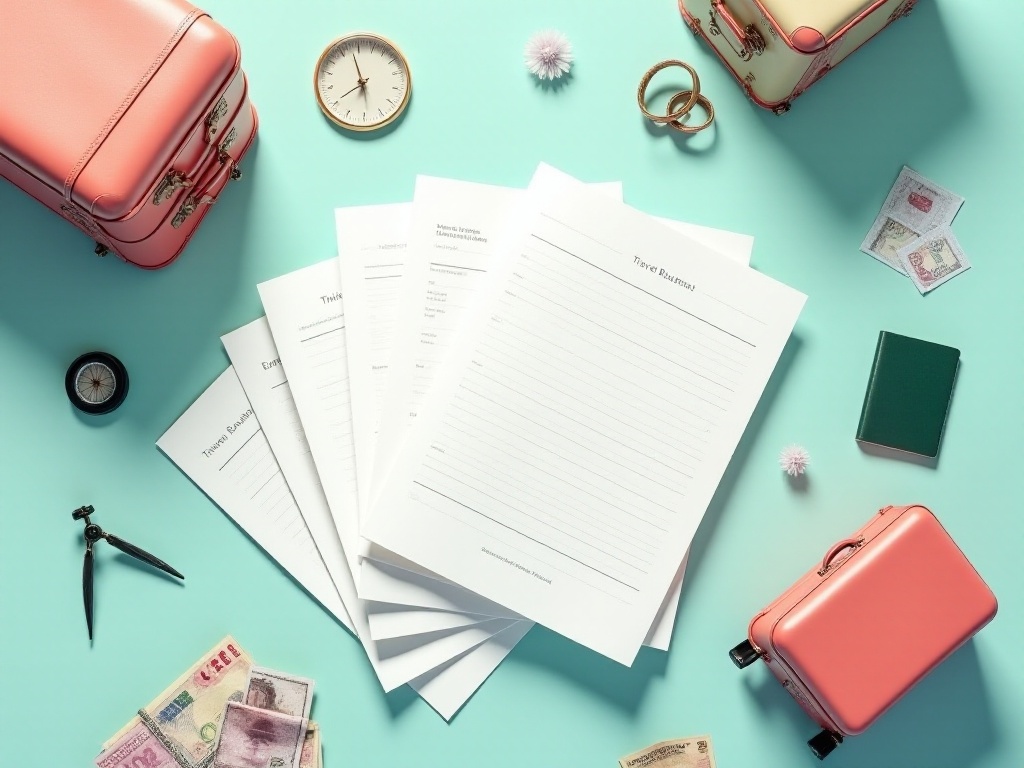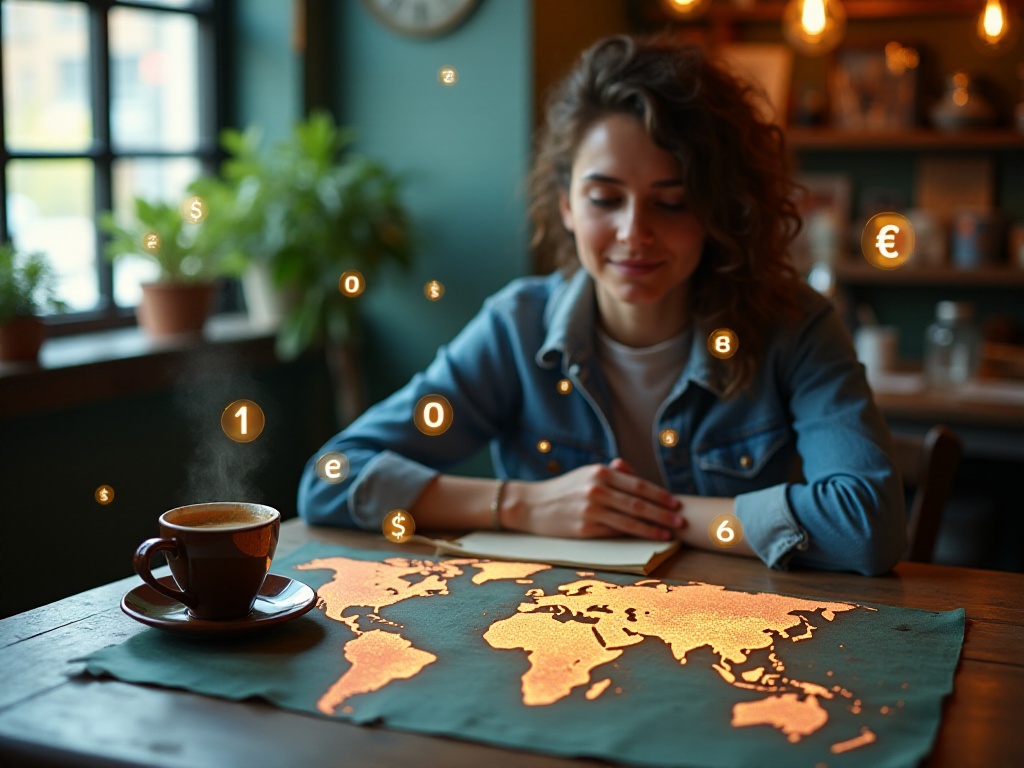Introduction
Every time I open my social media, I see my girlfriends sunbathing on Thai islands, friends drinking coconuts on Vietnamese beaches, and roommates posing in front of Cambodian temples - it makes me drool with envy! But whenever I think about the cost of international travel, I can't help but toss my phone aside. That is until I discovered this super reliable travel blogger who showed me that you can actually travel Southeast Asia for a whole month on just ¥20,000 ($2,800)! She's been to over 20 countries and meticulously records expenses for each trip. After reading her posts, I realized that traveling Southeast Asia on ¥20,000 isn't just a fantasy with proper planning!
Why Budget
Speaking of the importance of budgeting, the blogger shared her embarrassing experience from her first solo international trip. She hadn't thought about budgeting at all then and ended up constantly worrying about money abroad. She would pull out a calculator to convert currencies even for street food, and wouldn't dare enter shops she liked for fear of running out of money to return home. She later realized that travel isn't about saving money - it's about enjoying yourself. Planning a budget in advance means you won't have to anxiously count pennies during your trip, allowing you to truly enjoy the travel experience.
Budget Breakdown
So the question is, how much does a month-long Southeast Asia trip actually cost? Last winter, the blogger traveled through Thailand, Vietnam, and Cambodia for just ¥19,876 ($2,780). Sounds like a great deal, right? Let's see how she spent her money wisely.
Flight Strategy
Airfare is always the biggest headache expense, but there are ways to work around it. The blogger's flight plan was: Beijing to Bangkok for ¥1,300 ($182), and Phnom Penh back home for ¥1,500 ($210). These prices are quite reasonable for off-season. She revealed that choosing Southeast Asian budget airlines can save a lot of money. Airlines like AirAsia and NokAir often offer special fares, sometimes as low as ¥2,000 ($280) round trip. However, catching these deals requires strategy: first, set up price alerts on major booking platforms for immediate notifications of deals; second, follow airlines' official social media accounts where promotions are often announced in advance; third, choose suitable travel dates by avoiding peak holiday periods.
Accommodation Costs
Accommodation costs are the most flexible part of the budget. The blogger shared that in big cities like Bangkok, hostel beds average ¥80 ($11) per night, and many hostels are conveniently located near metro stations. In second-tier cities like Chiang Mai or Siem Reap, it's even cheaper at ¥50 ($7) per night. She usually stayed in four or six-bed dorms that were clean and tidy, and got to meet friends from around the world. Monthly accommodation totaled around ¥2,400 ($336). Of course, if you want more comfortable accommodations, you can choose budget hotels or guesthouses at ¥150-200 ($21-28) per night, though this will increase your budget accordingly.

Food and Drink Expenses
The cost of living in Southeast Asia is truly delightful. In Thailand, the blogger loved street food stalls where meals cost just ¥15-20 ($2-3). Her most memorable meal was seafood noodles in Bangkok's Chinatown for just ¥18 ($2.50), which was both filling and delicious. Sitting down at a regular restaurant costs between ¥30-50 ($4-7). Night markets are even cheaper, with most snacks around ¥10 ($1.40). In Vietnam, a bowl of pho costs just ¥8 ($1.10), with a braised egg adding just ¥3 ($0.40). Cambodian fried rice noodles at ¥12 ($1.70), paired with local lemonade, makes for a delicious and affordable meal.
The blogger suggests: have breakfast at your accommodation, as many hostels provide free bread, jam, and coffee; lunch at local restaurants for authenticity and affordability; and dinner at night markets for various street foods. Following this pattern, daily food costs around ¥40 ($5.60), totaling ¥1,200 ($168) per month. However, she notes that if you want to try Michelin-recommended restaurants or specialty seafood, you might need to budget a bit more.

Transportation Costs
For transportation, the blogger's experience is: walk when possible, and use public transport instead of taxis. In Bangkok, BTS Skytrain single trips cost about ¥10 ($1.40), with little price difference between one and ten stops. For longer distances, tuk-tuks are available, with short trips costing ¥20 ($2.80). For inter-city travel, buses are recommended - a night bus from Bangkok to Chiang Mai costs ¥200 ($28) and saves a night's accommodation.
She particularly mentions that walking is the best mode of transportation. It saves money and helps discover interesting street scenes. For instance, in Hanoi's Old Quarter, she discovered many trendy cafes and vintage shops on foot. Based on her experience, monthly transportation costs around ¥1,000 ($140). However, you might spend more on taxis if you're in a hurry or the weather is bad.
Attraction Tickets
Ticket expenses depend on personal travel preferences. For example, a three-day pass to Cambodia's Angkor Wat costs ¥390 ($55) - while not cheap, it's reasonable considering the archaeological park's scale and historical value. Thailand's Grand Palace ticket is 500 baht (about ¥100/$14), including admission to the Emerald Buddha Temple. Vietnamese attractions are generally cheaper, with Ho Chi Minh City's Reunification Palace at just ¥30 ($4.20).
The blogger recommends budgeting ¥3,000 ($420) for entrance fees. She says that since you've come all this way, it's worth visiting important cultural sites. However, not every attraction is worth the entrance fee - some places are beautiful enough to photograph from outside. She also shares a tip: many attractions offer student discounts, so bring your student ID if you're still in school.

Shopping and Entertainment
Honestly, this is where it's easiest to overspend. Thai massages, Vietnamese silk, Cambodian handicrafts - each is irresistible. The blogger suggests setting a fixed budget, like ¥2,000 ($280), for souvenirs and special experiences. She says travel isn't about shopping but experiencing local culture and life.
However, she admits some experiences are worth the money. In Thailand, you must try authentic Thai massage, about ¥150 ($21) for 60 minutes; in Hoi An, Vietnam, you can get a custom-made cheongsam for ¥300 ($42); in Cambodia, you can take a cooking class to learn local specialties for about ¥200 ($28).

Emergency Fund
From multiple travel experiences, the blogger has established one iron rule: always set aside 15% of your budget for contingencies. For this trip, she reserved ¥3,000 ($420) for emergencies, which proved useful in Vietnam when she needed emergency dental care. Although medical costs in Vietnam are cheaper than in China, it still cost nearly ¥1,000 ($140). The emergency fund can also cover unexpected situations like flight changes or replacing lost documents.

Money-Saving Tips
Through numerous travel experiences, the blogger has compiled a set of money-saving secrets, each based on real experience.
First, exchange currency early. She usually starts monitoring exchange rates three months in advance, exchanging some when rates are relatively low. Last year, she exchanged when the Thai baht was at 4.8, before it rose to 5.2, saving quite a bit. She suggests downloading currency apps and setting price alerts to catch good rates.
Second, be strategic with accommodation. Many hostels have membership systems offering discounts for weekly stays. She saved over ¥200 ($28) at a Chiang Mai hostel this way. Other ways to save include: booking at least a month in advance for better rates; choosing accommodation slightly away from city centers to save half the room rate with just a 10-minute walk; sharing double rooms with travel companions instead of booking hostel beds.
Third, adapt your dining habits to local conditions. In Thailand, many restaurants offer lunch buffets at half the dinner price. She often ate big lunches at buffets and just snacked for dinner. Vietnamese morning markets are also good value, with many authentic shops offering 30% discounts before 10 AM. In Cambodia, night market food prices drop after 8 PM, offering fresh food at better prices.
Conclusion
Through this detailed budget breakdown, we can see that traveling Southeast Asia for a month on ¥20,000 ($2,800) isn't just a dream. The key is doing your homework, understanding local prices, and allocating your budget reasonably. Of course, the point isn't to save as much as possible, but to make every penny count. Following the blogger's advice, everyone can plan an economical yet exciting Southeast Asian adventure.
The blogger says her next post will share how to do a 10-day Japan Kansai trip on ¥15,000 ($2,100) - just thinking about it is exciting! Which Southeast Asian country do you most want to visit? Ready to start planning your trip with your budget?


